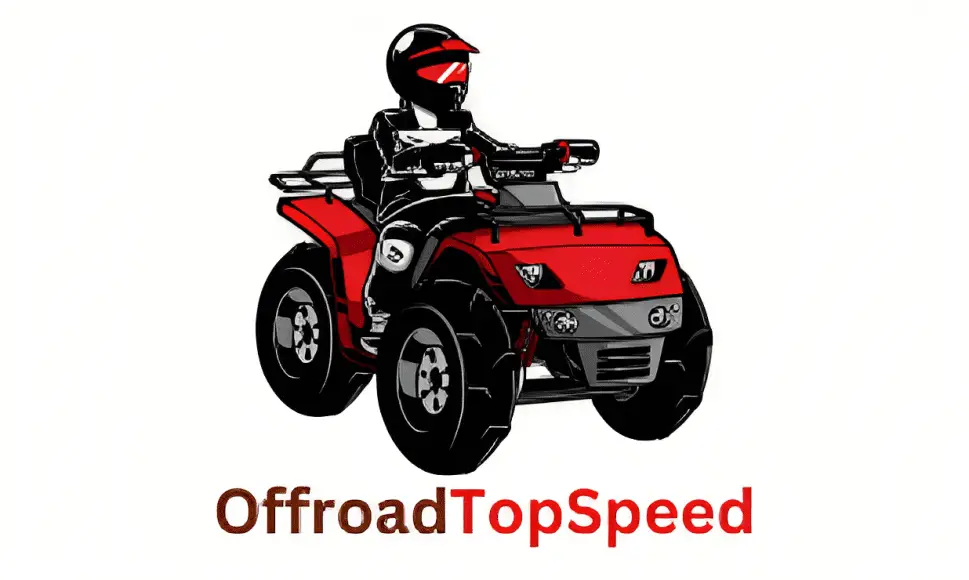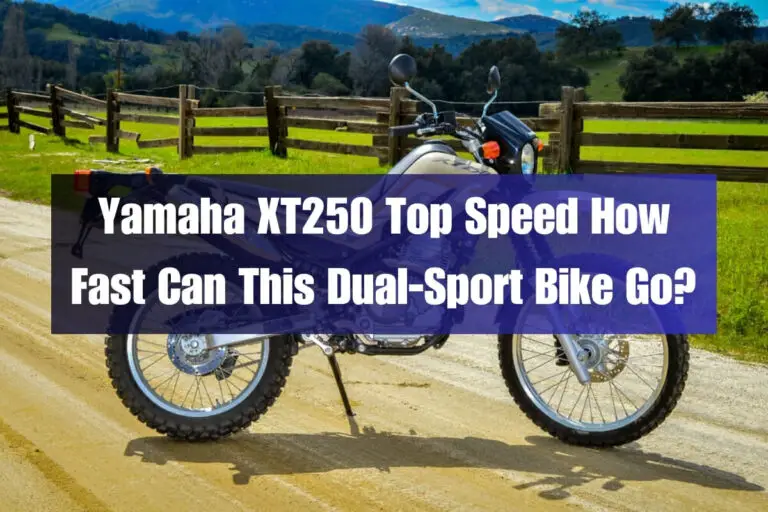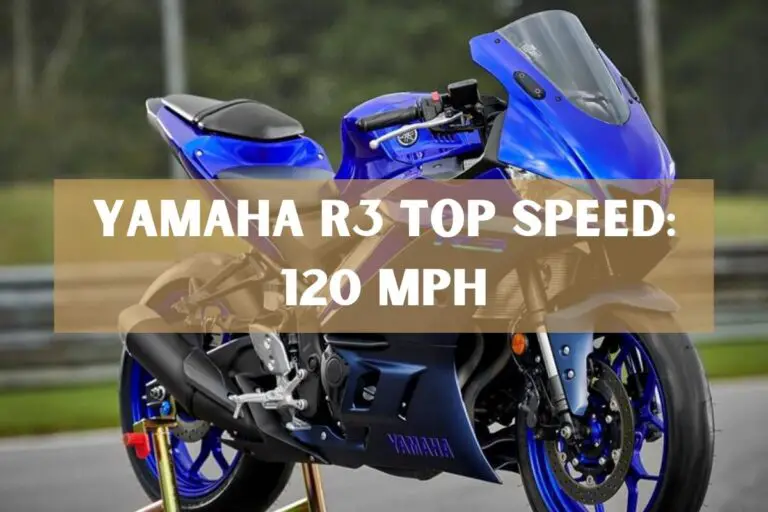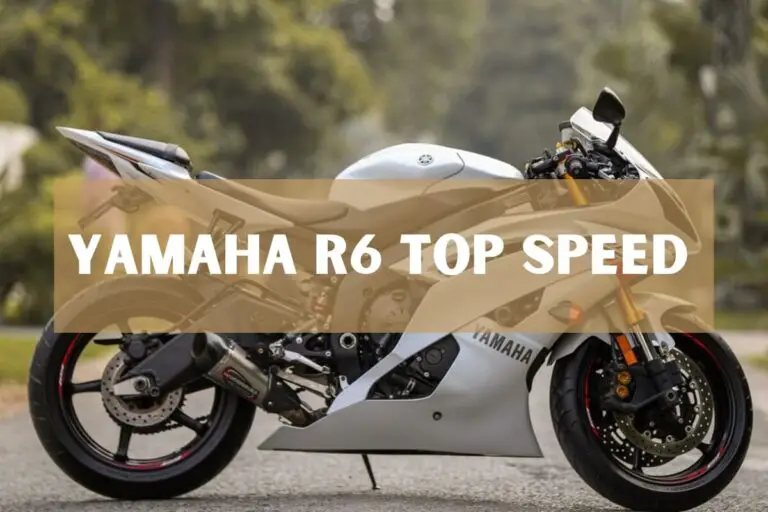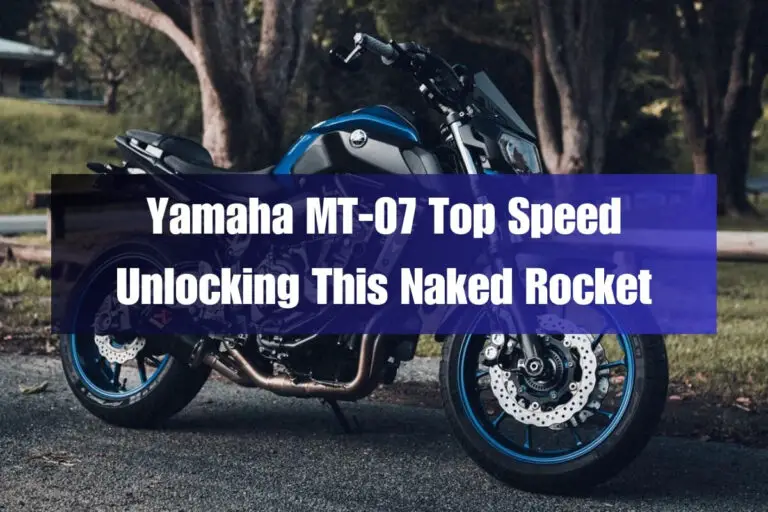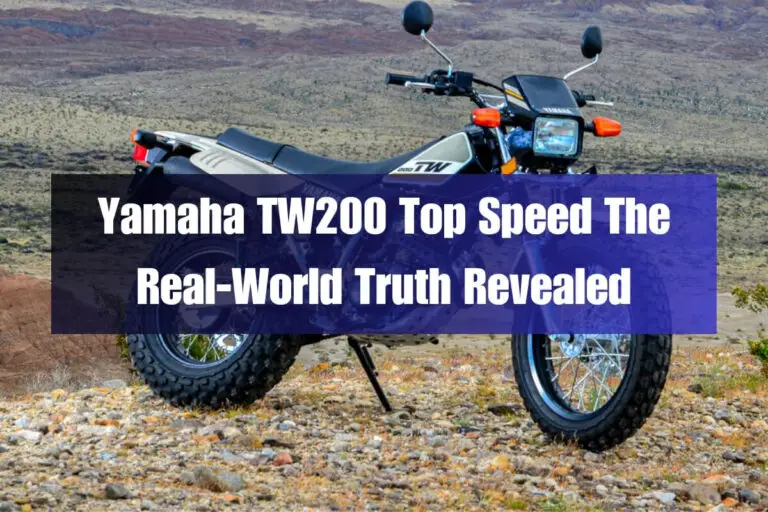Yamaha Zuma 125 Top Speed: The Ultimate Guide
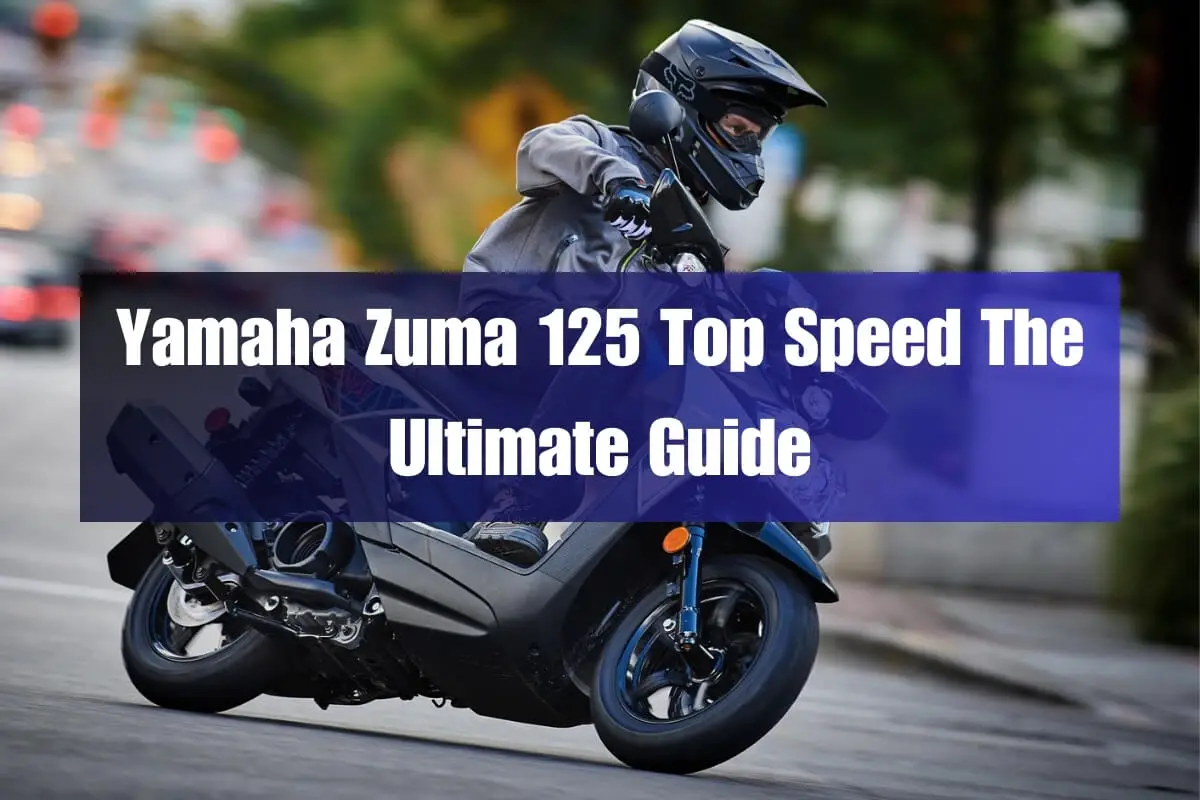
Seeking a nimble and economical ride? The Yamaha Zuma 125 has probably piqued your curiosity. A burning question on many minds is, “Just how fast can this compact scooter go?” Let’s delve into the Zuma 125’s top speed potential, drawing from real-world performance data, owner testimonials, and the scope for extracting every ounce of velocity through modifications. Get ready to uncover the zippy prowess of this two-wheeled urban warrior.
Yamaha Zuma 125: An Overview
Before we delve into the nitty-gritty of top speed, let’s take a moment to appreciate the Yamaha Zuma 125 and what makes it such a popular choice among urban commuters and weekend adventurers.
Key Features and Specifications
| Feature | Specification |
|---|---|
| Engine | 125cc liquid-cooled, 4-stroke SOHC single; 4 valves |
| Bore x Stroke | 52.0mm x 58.7mm |
| Compression Ratio | 11.2:1 |
| Fuel Delivery | Fuel Injection |
| Transmission | V-Belt automatic |
| Front Suspension | Telescopic upright fork with 3.2 in of travel |
| Rear Suspension | Dual shock absorber with swingarm with 3.1 inches of travel |
| Front Brakes | Disc brake / 245mm / single disc with double-piston caliper |
| Rear Brakes | Disc brake / 230mm / single disc with single-piston caliper |
| Tires (Front/Rear) | 120/70-12 51L / 130/70-12 56L |
| Fuel Capacity | 1.6 gallons |
| Fuel Economy | 101 mpg (estimated) |
| Wet Weight | 282 lbs |
Design and Ergonomics
The Zuma 125 boasts a rugged, modern design with a step-through steel frame that makes mounting and dismounting a breeze. Its narrow seat and ample legroom accommodate two riders comfortably, while the foldable passenger footrests and handholds ensure a secure ride.
Engine and Performance Highlights
Powering the Zuma 125 is a compact yet mighty 125cc Blue Core engine with Yamaha’s Variable Valve Actuation (VVA) technology. This liquid-cooled, fuel-injected powerplant delivers impressive fuel efficiency (up to 101 mpg) and a smooth, linear power delivery – ideal for urban commuting and weekend adventures alike.
Top Speed and Performance
Now, let’s dive into the burning question: What is the Yamaha Zuma 125’s top speed?
Yamaha Zuma 125 Top Speed: Tested and Verified
According to Yamaha’s specifications and real-world testing, the Zuma 125 can reach a top speed of around 61 miles per hour (98 km/h) after the break-in period. With careful modifications, some owners have reported pushing the top speed to 75-80 mph, but this is not recommended as it can compromise the scooter’s stability and safety.
Acceleration and Power Delivery
While the Zuma 125’s top speed may not be blistering, its acceleration and power delivery are surprisingly punchy for a 125cc scooter. The automatic V-belt transmission and centrifugal clutch provide excellent off-the-line acceleration, making it a breeze to merge with traffic or overtake slower vehicles.
Factors Affecting Top Speed
Several factors influence the Zuma 125’s top speed, including:
- Engine Displacement: The 125cc engine strikes a balance between power and fuel efficiency, limiting its outright top speed potential.
- Weight: At 282 lbs wet, the Zuma 125 is relatively lightweight, but added cargo or a passenger can impact top speed.
- Aerodynamics: The upright riding position and boxy design create more wind resistance at higher speeds.
- Gearing: The Zuma 125’s gearing is optimized for urban riding, sacrificing some top-end speed for improved acceleration.
Test Ride Impressions
To truly understand the Yamaha Zuma 125’s performance, nothing beats a first-hand test ride experience.
First-hand Experience: Riding the Yamaha Zuma 125
From the moment you thumb the electric start button, the Zuma 125 impresses with its smooth and vibration-free operation. Twisting the throttle rewards you with eager acceleration, making it a breeze to zip through city traffic or overtake slower vehicles on the open road.
Handling and Maneuverability
Despite its compact size, the Zuma 125 feels planted and confidence-inspiring, thanks to its low center of gravity and robust suspension. The telescopic front forks and dual rear shocks soak up bumps and potholes with ease, ensuring a comfortable ride even on less-than-perfect roads.
Comfort and Practicality
Long rides are a pleasure on the Zuma 125, with its roomy ergonomics and plush seat accommodating riders of various sizes. The ample under-seat storage compartment can swallow a full-face helmet, while the front storage compartment with USB charging keeps your devices topped up on the go.
Owner Reviews and Feedback
No product review is complete without hearing from the people who matter most: the owners themselves.
Positive Reviews: What Owners Love
Owners rave about the Zuma 125’s fuel efficiency, with many reporting real-world figures surpassing the claimed 101 mpg. The scooter’s nimble handling, low maintenance costs, and practicality for urban commuting are also frequently praised.
“I love my Zuma 125! It’s the perfect city commuter – zippy, fuel-efficient, and a blast to ride.” – Sarah, Los Angeles
Negative Feedback and Criticisms
While the Zuma 125 enjoys overwhelmingly positive reviews, some owners have critiqued its somewhat limited top speed, especially when carrying a passenger or facing headwinds. Others have noted that the small wheels can make navigating potholes or rough terrain a bit challenging.
“The Zuma 125 is great, but I wish it had a little more oomph for highway riding. It struggles to maintain 55 mph on steep inclines.” – Mike, Dallas
Pros and Cons: A Balanced Perspective
Like any vehicle, the Yamaha Zuma 125 has its strengths and weaknesses. Here’s a quick rundown of the pros and cons:
Pros:
- Excellent fuel efficiency
- Low ownership and maintenance costs
- Nimble handling and maneuverability
- Ample storage and practical features
- Reliable and easy to operate
Cons:
- Limited top speed, especially with a passenger or headwinds
- Small wheels can struggle with rough terrain
- Upright riding position creates more wind resistance at higher speeds
Competitors and Alternatives
While the Yamaha Zuma 125 is a compelling option, it’s always wise to explore alternatives and competitors before making a purchasing decision.
Top Speed Comparison with Similar Scooters
Here’s how the Zuma 125’s top speed stacks up against some of its closest competitors:
- Honda Ruckus: Top speed around 55 mph
- Vespa Sprint 150: Top speed around 60 mph
- Kymco Agility 125: Top speed around 50–55 mph
Advantages and Disadvantages of the Yamaha Zuma 125
Compared to its rivals, the Zuma 125 shines with its fuel efficiency, practical features, and nimble handling. However, some competitors offer slightly higher top speeds or more storage capacity, depending on your priorities.
Choosing the Right Scooter for Your Needs
Ultimately, the “best” scooter comes down to your specific needs and intended use. If you prioritize fuel efficiency, practicality, and urban maneuverability over outright top speed, the Yamaha Zuma 125 could be an excellent choice. However, if you frequently ride at highway speeds or carry heavy loads, a larger-displacement scooter might better suit your requirements.
Modifications and Upgrades for More Speed
For those seeking to eke out every last mile per hour from their Yamaha Zuma 125, a range of modifications and upgrades are available.
While the Zuma 125’s stock engine is designed for efficiency and reliability, careful performance modifications can unleash extra horsepower and top speed potential. Popular upgrades include:
- Big Bore Kits: Increasing the engine’s displacement by installing larger pistons and cylinders can boost power output.
- Performance Air Filters: Upgrading to a high-flow air filter can improve airflow and increase horsepower.
- Exhaust Systems: An aftermarket exhaust system can reduce back-pressure and extract more power from the engine.
It’s crucial to have these modifications performed by experienced professionals to ensure safety and longevity.
Aerodynamic Improvements
At higher speeds, wind resistance becomes a significant limiting factor. Aerodynamic upgrades can help the Zuma 125 slice through the air more efficiently:
- Windscreens: Installing a well-designed windscreen can reduce drag and turbulence around the rider.
- Fairings: Sleek, aerodynamic fairings can smooth airflow over the scooter’s body, improving top speed.
Other Modifications for Increased Top Speed
Beyond engine and aerodynamic enhancements, other potential modifications include:
- Gearing Changes: Altering the final drive gearing can trade off acceleration for increased top speed potential.
- Lightweight Wheels and Tires: Upgrading to lighter wheels and high-performance tires can reduce unsprung weight and rolling resistance.
However, it’s essential to approach modifications with caution, as extreme changes can impact the scooter’s handling, stability, and overall safety.
Pricing and Availability
Now that we’ve explored the Yamaha Zuma 125’s performance and modification potential, let’s dive into its pricing and availability.
Manufacturer’s Suggested Retail Price (MSRP)
For the 2024 model year, Yamaha has set the Manufacturer’s Suggested Retail Price (MSRP) for the Zuma 125 at $3,799.
Dealer Pricing and Offers
While the MSRP provides a baseline, actual prices can vary depending on the dealer and any promotional offers or incentives. Many dealers offer the Zuma 125 for around the same $3,799 price point, though savvy shoppers may be able to find better deals.
Availability and Where to Buy
The Yamaha Zuma 125 is widely available through Yamaha’s extensive dealer network across the United States. Major powersports retailers like Powersport East, K’s Motorsports, and Action Power Sports also carry the scooter, giving buyers plenty of options for sourcing their new ride.
Who Should Consider the Yamaha Zuma 125?
With its capabilities and limitations in mind, let’s explore the ideal rider profile for the Yamaha Zuma 125.
Ideal Rider Profile and Use Cases
The Zuma 125 is an excellent choice for urban commuters, college students, and anyone seeking an efficient and practical mode of transportation for short- to medium-range trips. Its compact size, fuel efficiency, and nimble handling make it a joy to navigate congested city streets and tight parking spaces.
Suitability for Commuting, Urban Riding, and Weekend Adventures
While its top speed may limit its suitability for sustained highway travel, the Zuma 125 excels at urban commuting and weekend adventures on backroads and rural routes. Its ample storage and comfortable ergonomics make it a capable companion for errand-running, grocery shopping, and exploring the great outdoors (within reason).
Common Issues and Fixes
Like any vehicle, the Yamaha Zuma 125 isn’t immune to potential issues and problems. Understanding common pitfalls can help owners stay ahead of the curve and ensure a smooth ownership experience.
Known Problems and Recalls
One notable issue involved a 2009 recall related to an inadequate fuel supply caused by improper clearance in the internal fuel pump components. Yamaha addressed this problem by recalling affected units and making the necessary repairs.
Troubleshooting and Maintenance Tips
Regular maintenance is key to keeping the Zuma 125 running at its best. Common troubleshooting items include:
- Fuel Pump Issues: If the scooter struggles to start or run, a faulty fuel pump could be the culprit. Proper diagnosis and replacement may be necessary.
- Battery Maintenance: The Zuma 125 uses a sealed AGM battery, which can last up to 10 years with proper care and a clean charging system.
- Carburetor Cleaning: For older models, periodic carburetor cleaning can help clear clogs and ensure optimal fuel delivery.
Addressing Common Complaints and Concerns
While the Zuma 125 is generally well-regarded, some owners have reported issues with fuel pumps, batteries, and carburetors (on older models). Staying on top of maintenance and addressing these potential problems promptly can help mitigate frustrations and ensure reliable performance.
Safety and Reliability
Safety and reliability should be top priorities when considering any vehicle purchase, and the Yamaha Zuma 125 is no exception.
Safety Features and Ratings
The Zuma 125 comes equipped with a range of safety features, including:
- Disc Brakes Front and Rear: Powerful disc brakes (245mm front, 230mm rear) provide strong stopping power.
- Unified Braking System: The rear brake lever applies some force to the front brake for smoother, more controlled stops.
- Sturdy Construction: The robust steel frame and beefy suspension components contribute to a stable, confidence-inspiring ride.
While official safety ratings are not available for the Zuma 125, Yamaha’s commitment to quality and safety is well-established.
Reliability Scores and Long-term Ownership Experience
Yamaha scooters, in general, have a reputation for reliability and longevity when properly maintained. Many Zuma 125 owners report trouble-free ownership experiences spanning several years and tens of thousands of miles.
Recalls and Potential Safety Concerns
As mentioned earlier, Yamaha issued a recall for certain 2009 Zuma 125 models to address a fuel pump issue that could lead to an inadequate fuel supply. Aside from this isolated incident, no major safety concerns or recalls have been reported for the Zuma 125 in recent years.
Frequently Asked Questions
Even after a comprehensive review, some questions may still linger. Let’s address some of the most frequently asked questions about the Yamaha Zuma 125’s top speed, performance, and ownership experience.
Can the Yamaha Zuma 125 be made faster than 80 mph?
While some extreme modifications may push the top speed beyond 80 mph, doing so is not recommended, as it can compromise the scooter’s stability, handling, and overall safety.
How does the Zuma 125’s acceleration compare to larger scooters?
Thanks to its lightweight and automatic transmission, the Zuma 125 offers surprisingly punchy acceleration for its size, often outperforming larger scooters off the line.
Will installing a performance exhaust void the warranty?
Modifications like aftermarket exhausts may void the manufacturer’s warranty, so it’s essential to consult with your dealer or carefully review the warranty terms before making any changes.
How often does the Zuma 125 require maintenance?
Like any vehicle, the Zuma 125 benefits from regular maintenance, including oil changes, brake inspections, and periodic tune-ups. Refer to the owner’s manual for specific maintenance intervals.
Are parts and accessories readily available for the Zuma 125?
Yes, Yamaha and third-party suppliers offer a wide range of genuine parts, accessories, and upgrades for the Zuma 125, ensuring easy maintenance and customization.
How long can I expect the Zuma 125 to last with proper care?
With proper maintenance and care, the Zuma 125 can easily provide reliable transportation for 50,000 miles or more, making it a cost-effective and long-lasting investment.
Final Takeaways
As we’ve explored in depth, the Yamaha Zuma 125 is a well-rounded and practical scooter that strikes an excellent balance between performance, efficiency, and affordability.
With a top speed of around 61 mph (98 km/h) and the potential for modest increases through careful modifications, the Zuma 125 is a capable and nimble urban commuter. Its punchy acceleration, predictable power delivery, and impressive fuel efficiency (up to 101 mpg) make it a joy to ride in the city or on weekend adventures.
If you’re in the market for a reliable, fuel-efficient, and practical scooter that can handle your daily commute or occasional longer trips with ease, the Yamaha Zuma 125 is an excellent choice. Its combination of performance, features, and affordability make it a standout option in the crowded 125cc scooter segment.
